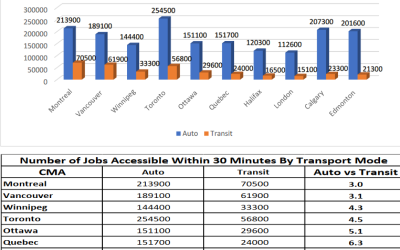Given the multi-billion dollar “stimulus” projects rolling out from governments this year, politicians should pick up a copy of a 2003 book, Megaprojects and Risk: An Anatomy of Ambition. This is especially useful for politicians who think Alberta should have a high-speed train, this after a recent report on the matter from the provincial government.
First, on the Europeans’ conclusions: the three Megaprojects authors (academics and urban planners involved in transportation issues) surveyed decades of stimulus-type infrastructure. What they found was unsurprising to anyone aware of megaprojects around the world and their cost overruns, or in Canada—think of Montreal’s very expensive Olympic Stadium, BC’s 1990s-era fast ferry boondoggle, or the Vancouver Convention Centre and the 2010 Winter Olympic games.
Ultimately, most major projects were low-balled in terms of their predicted cost to the public treasury. “Whether we like it not,” wrote Bent Flyvbjerg, Nils Bruzelius, and Werner Rothengatter, megaproject development is currently a field where little can be trusted, not even—some would say especially not—numbers produced by analysts.”
The high-speed train report prepared for the province by TEMS/Oliver Wyman, might be a temporary exception to the Megaprojects rule. Refreshingly, the study gave no recommendations. It did lay out a range of scenarios and figures.
For example, four different types of rail technologies are surveyed with costs that could range from $3-billion to $20-billion. The study is clear that taxpayers and politicians should be under no illusion the private sector could profitably finance this megaproject. Such a project “calls for a substantial investment by both the public and private sectors,” write the TEMS analysts.
The study report does reference the usual number of “benefits” which readers and especially boosters might misinterpret. But that’s not the same as tax revenues. Over the lifetime of the high speed rail project, between just $33 million to $69 million in new tax revenue would accrue to Alberta and the federal government; that’s the worst-case scenario.
Governments might recoup between $800 million to $1.7 billion (if the $20-billion option was chosen and all its assumptions pan out). Either way, that’s a massive negative return to governments on their initial $3-billion or $20-billion cost, to say nothing of the additional interest costs governments would incur.
Over the life of the project, 3,400 to 7,162 jobs might be created. That’s nothing compared to the almost two million already employed in Alberta. But at $20-billion for the 7,162 jobs, that’s an even pricier per job cost than the Washington-Ottawa-Toronto bailout for the automotive sector—no small accomplishment.
Also, it’s not as if high speed rail would create much new demand for travel and the resulting jobs and tax revenues. The TEMS report estimates between 88 per cent to 90 per cent of all high speed passengers would come from existing modes of transportation. Thus, much of the touted economic “benefit” would be a mirage because of the substitution effect, i.e., a dropped plane flight for a train ticket.
Even on the environmental front, usually the trump card high speed rail proponents flash to justify a new megaproject, the report concludes even the fastest high speed train would only garner seven per cent of all passengers on the Calgary-Edmonton corridor—and that’s with the $20-billion spent. Most environmentalists could probably think of better places to spend $20-billion-plus-interest.
There are plenty of reasons why high speed rail doesn’t make sense in Alberta: the substitution effect just noted; the low population density in the Edmonton-Calgary corridor (with 2.2 million people compared to 60-million in the Tokyo-Osaka region); also, given worldwide demographic projections, Alberta will likely never have the population crunch one sees in China or India where passenger rail makes sense.
Then there are the cost-overruns. The Japanese government once wrote off $350-billion to make rail “profitable.” Or consider how even an existing Canadian low-tech rail line such as VIA Rail isn’t profitable; since 1995, taxpayers have shelled out $2.4 billion in operating subsidies alone.
I actually prefer to travel by train and did so during two years I lived in Japan. There, passenger rail makes sense. But context matters. A high speed passenger train makes no economic, tax, or even environmental sense in Alberta. I suspect it never will.


